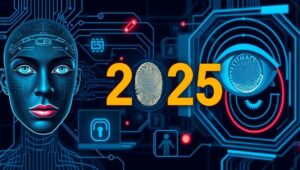May 31, 2025
The Future of Biometric Security: Beyond Fingerprints and Faces (2026)
The Future of Biometric Security: Beyond Fingerprints and Faces (2026) Biometric security has rapidly evolved, moving beyond traditional fingerprints and facial recognition. As we approach 2026, new and innovative methods are emerging, promising enhanced security and user experience. This article explores the cutting-edge advancements shaping the future of biometrics. The Rise of Advanced Biometric Technologies Voice Recognition: Voice recognition technology is becoming more sophisticated, utilizing AI to analyze unique vocal characteristics. This method offers a hands-free and convenient security solution, ideal for smart homes and IoT devices. Iris and Retina Scanning: Iris and retina scanning provide highly secure identification by











